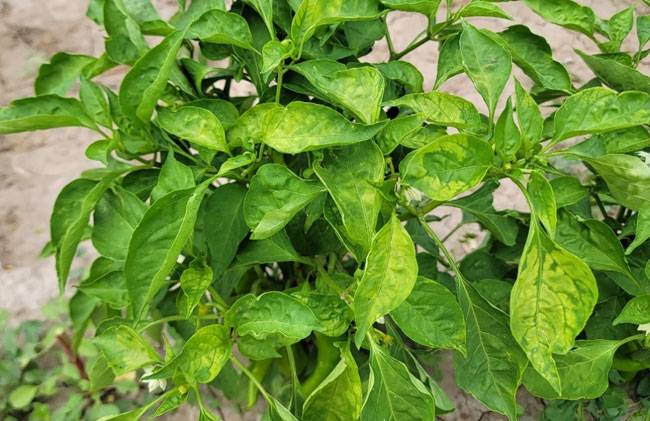Capsicum
Alfalfa Mosaic Virus

Vector: Aphids
Viral Disease

Vector: Aphids
Viral Disease
Alfalfa mosaic virus (AMV) is a highly versatile pathogen with an exceptionally wide host range, infecting over 400 plant species, including critical solanaceous crops such as tomato, tobacco, and potato. Its transmission by various aphid species, as well as through pollen and potentially seeds, makes AMV a significant challenge for agricultural management. Below is a concise overview of AMV, its symptoms, and management strategies.
Key Features of AMV
Host Range:
Infects over 400 plant species.
Affects solanaceous crops such as tomato, potato, tobacco, and chili pepper.
Transmission:
Spread by numerous aphid species.
Transmitted through pollen and potentially seeds.
Symptoms:
Infected Leaves: Mottling, mosaics, malformations, and vein deformation.
Potato Crops: Tuber necrosis, reducing yield and quality.
Chili Peppers: Stunted growth, leaf discoloration, and deformation, leading to reduced yield and quality.
Impact on Crop Yield
AMV significantly reduces the productivity and marketability of infected crops.
Preliminary research highlights the adverse effects of AMV on chili pepper production, with stunted plant growth and compromised yields.
Aphids as Vectors of AMV
Role in Transmission:
Aphids are primary vectors for AMV spread.
Infested plants serve as reservoirs for aphids, facilitating virus dissemination.
Management Challenges:
Aphids thrive in greenhouse environments and can spread via wind and storms.
They reproduce rapidly, with over 20 generations annually in mild climates.
Environmental Preferences:
Optimal temperature for aphid population growth: 26.7°C.
Lower and upper developmental thresholds: 6.5°C and 37.3°C.
Integrated Management Strategies
Vector Suppression:
Focus on aphid management as a means to control AMV spread.
Use insecticides judiciously to limit aphid resistance development.
Cultural Practices:
Maintain weed-free borders to remove alternate hosts for aphids.
Monitor and manage greenhouse conditions to reduce aphid survival.
Biological Controls:
Encourage natural predators of aphids to maintain ecological balance.
Crop Management:
Opt for virus-resistant crop varieties where available.
Implement crop rotation and sanitation practices to minimize virus persistence.
Conclusion
AMV and its primary vector, aphids, pose significant threats to global agriculture. Effective management requires a comprehensive approach integrating cultural, biological, and chemical control methods. With proper monitoring and timely interventions, the impact of AMV on critical crops like chili peppers can be mitigated, safeguarding both yield and quality.





